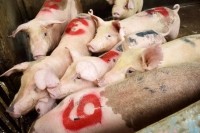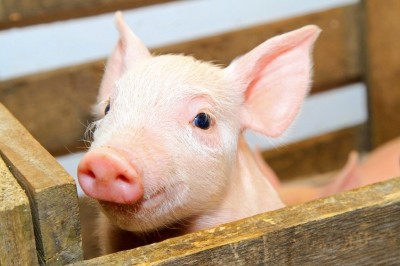Huvepharma looks to cultivate ZnO usage in French and Dutch pig sectors

“In France and the Netherlands there was no registered ZnO available [prior to the approval of Gutal], whereas in the other countries where ZnO enjoys wide use, such as the UK, it is a case of fighting for market share with the other main zinc oxide suppliers,” said Dr Christian Vervaet, EU sales director for Belgium headquartered, Huvepharma.
The Belgian company gained access to the French and Dutch markets soon after the Committee for Medicinal Products for Veterinary Use (CVMP) of the European Medical Agency (EMA) delivered a positive opinion on the use of Gutal and its approval was implemented by the Commission last year.
The registration for Gutal, which is targeted at the prevention of post-weaning diarrhea in piglets, also applies to Austria, Belgium, Bulgaria, Cyprus, Czech Republic, Denmark, Estonia, Germany, Greece, Hungary, Ireland, Italy, Latvia, Lithuania, Luxembourg, Malta, Poland, Portugal, Romania, Slovakia, Slovenia and Spain.
However, Huvepharma was only awarded EU registration for Gutal to be mixed into dry feed at a registered mill. So, in countries like Demark and Germany, it will prove difficult to gain any kind of traction as the practice of applying oral powders and granules rather than premixes, in terms of products like ZnO, is preferred by a significant part of the market.
“For the past few years Belgium had seen temporary authorization of ZnO to encourage a migration away from antimicrobials. Usage of ZnO in pig feed is quite high in that market now as a result,” added Vervaet.
The company, he told us, was not totally surprised at the final EU registration for Gutal, which had come about through Huvepharma submitting an authorization application via the decentralized procedure (DCP), with the UK acting as the reference member state
“We had been actively working to get it for a few years. We knew two countries were against it since they initiated a referral procedure at the end, but the majority had confirmed they were in favor of the authorization,” he said.
EMA arbitration
In fact, in May 2015, the EMA completed a long arbitration procedure following disagreement during the DCP among EU member states regarding approval for Gutal, with its CVMP finding there were insufficient grounds to support the concerns expressed by France and the Netherlands.
That committee concluded that by applying a few risk mitigation measures, the risk for the environment was acceptable. And it, therefore, determined the marketing authorization for Gutal could be granted provided the recommended controls were added to the product information.
The final decision on registration then lay with the Commission and the Standing Committee on Plants, Animals, Food and Feed (SCOPAFF) which implemented the CVMP opinion and agreed with the approval for Gutal
But the use of ZnO as veterinary medicine remains a hot topic in Europe.
The French food safety agency, ANSES, has initiated a class referral opposing the authorization of all zinc oxide veterinary premixes for piglets in the EU citing environmental impact grounds, and alleging ZnO can increase antibiotic resistance in microbes.
Antibiotic reduction grounds
In terms of other expert opinion, a January 2015 released report from the EIP-AGRI FG on Animal Husbandry – a Commission backed initiative bringing together stakeholders from the domains of science, farming and animal health to analyze how enhancing every aspect of pig farming from biosecurity, to facilities, to welfare to feeding could help reduce antibiotic usage, weighed up the benefits of ZnO application.
The authors concluded: “The use of therapeutically effective levels of zinc (2,500 ppm Zn) in the form of zinc oxide is effective in the prevention and treatment of diarrhea in young pigs; the pigs also grow faster and need less food to produce the same amount of meat. The mechanisms of action of copper and zinc in high pharmacological doses are not well understood, but they seem to modify the bacterial population in the gastro-intestinal tract.”
However the specialists note that prolonged exposure to high levels of zinc is associated with increases in some forms of antibiotic resistance in microbes.
The publication also flagged up the concerns about environmental accumulation of heavy metals.
And the experts noted that a reduction in Zn levels might be obtained by introduction of new, more efficient Zn compounds or forms, including Zn in complexes or as nanoparticles. “The addition of phytase to diets has reduced the binding of zinc by phytates and may allow a reduction in inclusion rate,” they wrote.











